Related Research Articles

The Western is a genre of fiction typically set in the American frontier between the California Gold Rush of 1849 and the closing of the frontier in 1890, and commonly associated with folk tales of the Western United States, particularly the Southwestern United States, as well as Northern Mexico and Western Canada.
The following is an overview of the events of 1894 in film, including a list of films released and notable births.

Gilbert M. "Broncho Billy" Anderson was an American actor, writer, film director, and film producer, who was the first star of the Western film genre. He was a founder and star for Essanay studios. In 1958, he received a special Academy Award for being a pioneer of the film industry.

Arthemus Ward "Art" Acord was an American silent film actor and rodeo champion. After his film career ended in 1929, Acord worked in rodeo road shows and as a miner in Mexico.
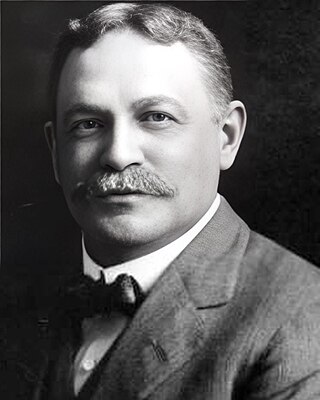
William Nicholas Selig was a vaudeville performer and pioneer of the American motion picture industry. His stage billing as Colonel Selig would be used for the rest of his career, even as he moved into film production.

Actuality film is a non-fiction film genre that uses footage of real events, places, and things, a predecessor to documentary film. Unlike documentaries, actuality films are not structured into a larger narrative or coherent whole. During the era of early cinema, actualities—usually lasting no more than a minute or two and usually assembled together into a program by an exhibitor—were just as popular and prominent as their fictional counterparts. The line between "fact" and "fiction" was not as prominent in early cinema as it would become once documentaries became the predominant non-fiction filmmaking form. Actuality as a film genre is related to still photography.

Buck Jones was an American actor, known for his work in many popular Western movies. In his early film appearances, he was credited as Charles Jones.
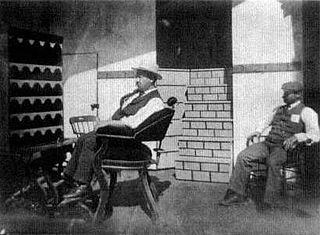
William Heise was a German-born American film cinematographer and director, active in the 1890s and credited for more than 175 short silent films. Heise filmed a "We All Smoke" skit promoting Admiral Cigarettes in 1897.
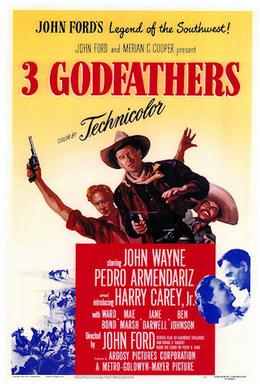
3 Godfathers is a 1948 American Western film in Technicolor directed by John Ford and starring John Wayne, Pedro Armendáriz and Harry Carey Jr.. The screenplay was written by Frank S. Nugent and Laurence Stallings based on the 1913 novelette The Three Godfathers by Peter B. Kyne. The story is a loose retelling of the biblical Three Wise Men in an American Western context.

The Resurrection of Broncho Billy is a 1970 live action short Western film directed by James R. Rokos and starring Johnny Crawford. It won an Oscar for Best Short Subject.

John Hartford Hoxie was an American rodeo performer and motion-picture actor whose career was most prominent in the silent film era of the 1910s through the 1930s. Hoxie is best recalled for his roles in Westerns and rarely strayed from the genre.

Charles Pacific Morrison (1878–1924), an American silent film actor, was born April 3, 1878, in Morrison, Colorado. The grandson of pioneer town founder George Morrison, he was known as "Chick" to many who knew him, a nickname conjunction of his first and middle names. A keen horse rider, he often appeared in riding contests and rodeos throughout the American west. At Morrison he trained horses for trick and fancy riding as well as break in wild horses. In 1909 Essanay Studios brought one such horse to Morrison to film some of their famous Broncho Billy series of 2-reel thrillers. Morrison got the director's attention through his expert horsemanship, daring maneuvers, as well as his control over the animals, and was used as a double for the lead actor in some of the more dangerous scenes.
Buck Connors was an American actor. He appeared in more than 80 films between 1912 and 1941. He is the son of William L Conner and Leah Bowen. He was born in Streator, LaSalle County, Illinois, and died in Quartzsite, Arizona., and is buried in Hi Jolly Cemetery in Quartzsite.
Broncho is a less common spelling of bronco, a horse with a propensity to buck.
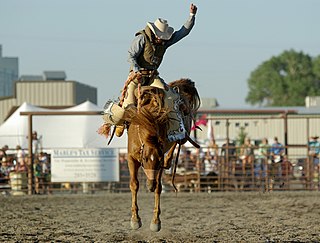
A bucking horse is any breed of horse, male or female, with a propensity to buck. They have been, and still are, referred to by various names, including bronco, broncho, and roughstock.

The Denver Dude is a 1927 American silent Western film directed by B. Reeves Eason and starring Hoot Gibson, Blanche Mehaffey, and Robert McKim. It was produced and distributed by Universal Pictures.
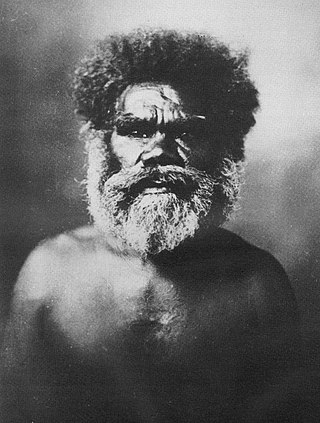
Mulga Fred Wilson (c. 1874 – 2 November 1948) was an Australian Aboriginal stockman and buck-jump rider, known as Mulga Fred. He was the star attraction of various touring rodeo shows in the decade before the First World War. Wilson is considered to be the first Aboriginal actor to appear in a motion picture for his role in the film Bushranger's Ransom, or A Ride for Life, completed in 1911. By the 1920s Wilson was leading an itinerant lifestyle, mainly throughout the western districts of Victoria, with occasional visits to the urban centres of Melbourne and Geelong. He was a well-known character in western Victoria where he attended agricultural shows and football games, demonstrating his skills with the stockwhip and the boomerang, as well as his abilities as a buck-jump rider. He also worked as a horse-breaker and station-hand throughout his life. Mulga Fred died in November 1948 at Horsham railway station, aged about 74 years, from injuries received when he was hit by a train.

The Broncho Buster is a 1927 American silent Western film directed by Ernst Laemmle and starring Fred Humes, Gloria Grey and Buck Connors.
Broncho Billy's Christmas Spirit is a lost 1914 American silent western and Christmas film directed by Gilbert M. Anderson. Anderson also stars as Broncho Billy.
References
- 1 2 "Bucking broncho". Library of Congress. 1894. Retrieved July 1, 2021.